We’re staring down a wide, stone-paved roadway that winds off into the distance. Nearby, low walls of crumbling brick trace out the arcades, rooms and courtyards of seaside villas in what was once the summer playground of Ancient Rome’s rich and famous. It’s a scene reminiscent of many historic sites of this large and powerful empire. Except this site is entirely unique. This site is under the sea.
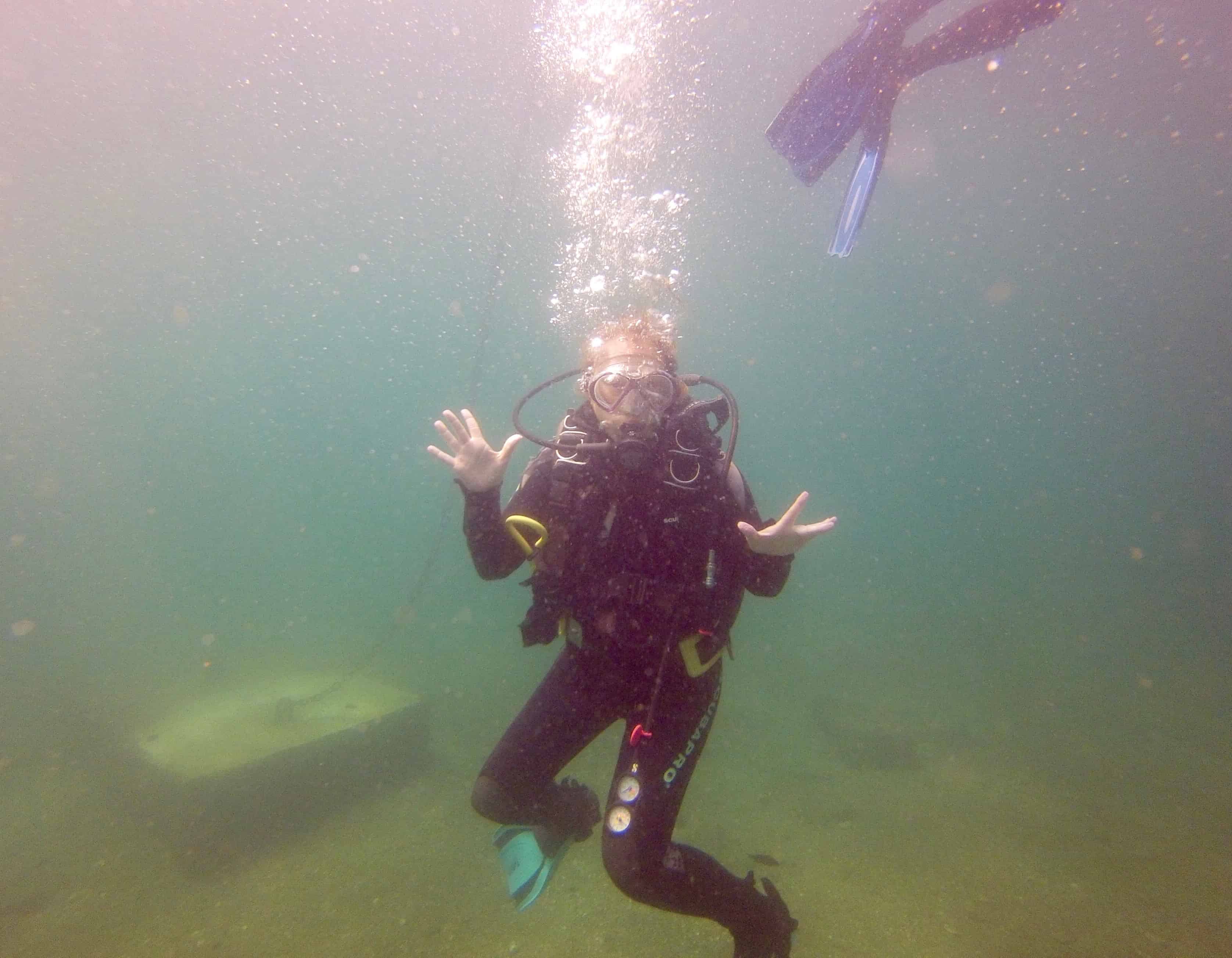
We’ve spent an exceptional couple of weeks cruising the stunning Amalfi coastline, dosing up on culture and pizza in the museums and streets of Naples, wandering through the past at the epic sites of Pompeii and Herculaneum and hiking to a palace ruin on the clifftops of Capri. Our final stop on this Italian adventure finds us in the beachside town of Arco Felice, nearing the western curve of the Bay of Naples. We’ve come here for one reason: to dive the Baia Underwater Archaeological Park.
Dominated by sleeping giant Vesuvius to the east, this western corner of the gulf is also a hotbed of volcanic activity. Behind the bay, Pozzuoli’s Phlegraean Fields steam and boil mud above a vast caldera that has also given rise to a geological phenomenon called bradyseism, where the ground slowly lifts or subsides as magma chambers under the ground fill up and empty.
Baia was the Saint-Tropez of first century AD Rome, a resort for the empire’s rulers and wealthy elite: Julius Caesar, Nero and Hadrian all had villas here. Over time, the city acquired a notorious reputation for hedonism and bad behaviour. Sacked in the 8th century and abandoned by the 16th century, the remnants of the ancient city gradually disappeared beneath the waves of the bay, victim to a slow bradyseism subsidence.
Today, we’re joining a guide from Centro Sub Campi Flegrei, a local dive centre, to explore two of the sites recovered in the decades following Baia’s rediscovery in the 1920s. The Baia Underwater Archaeological Park was established in 2002 to ensure its future protection.
Our first dive site, Smokey Reef, offers a smattering of tall brickwork pillars rising from the seafloor at a depth of around 12-16 metres. The pillars are believed to have provided protection to the ancient Port of Julius and are covered in marine flora, attracting plenty of small fish. The dive site is named for the many fumaroles – volcanic gas vents – that scatter the seafloor here, seeping gaseous bubbles. I push my hand into the seabed; despite the cooling water, the sand is piping hot.
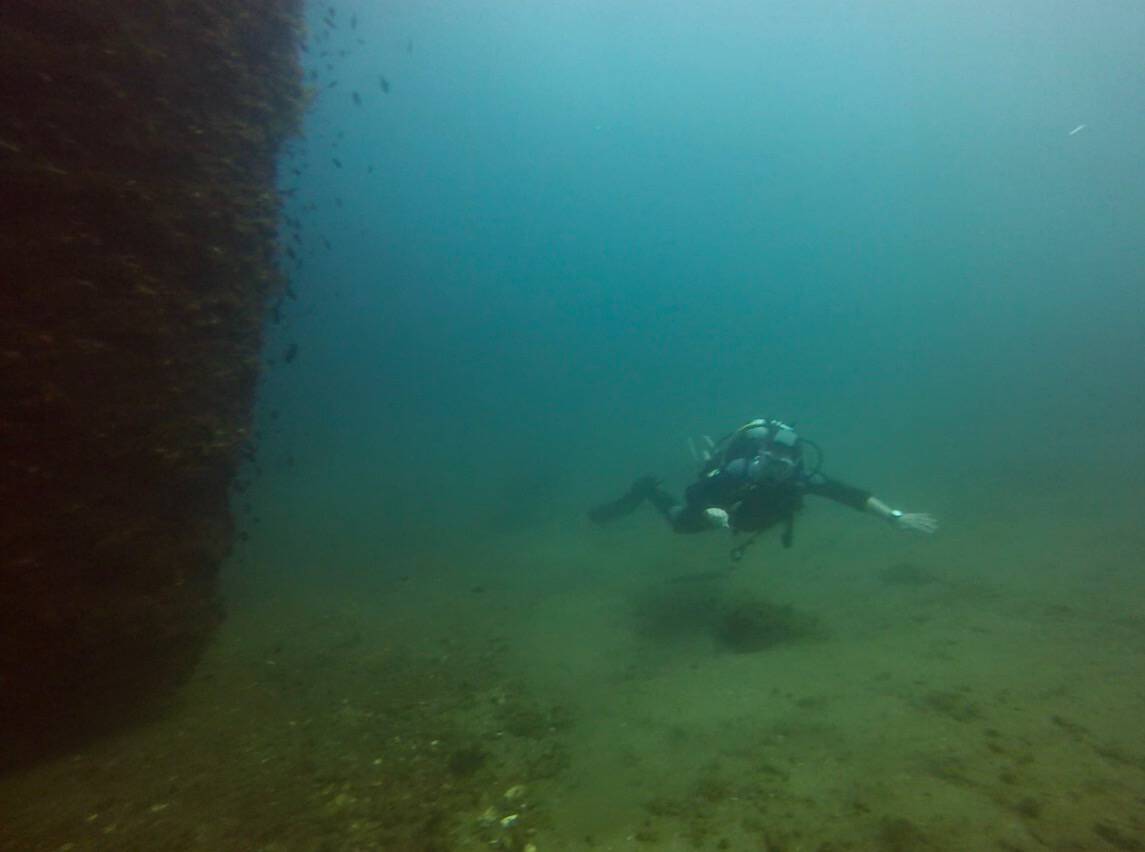
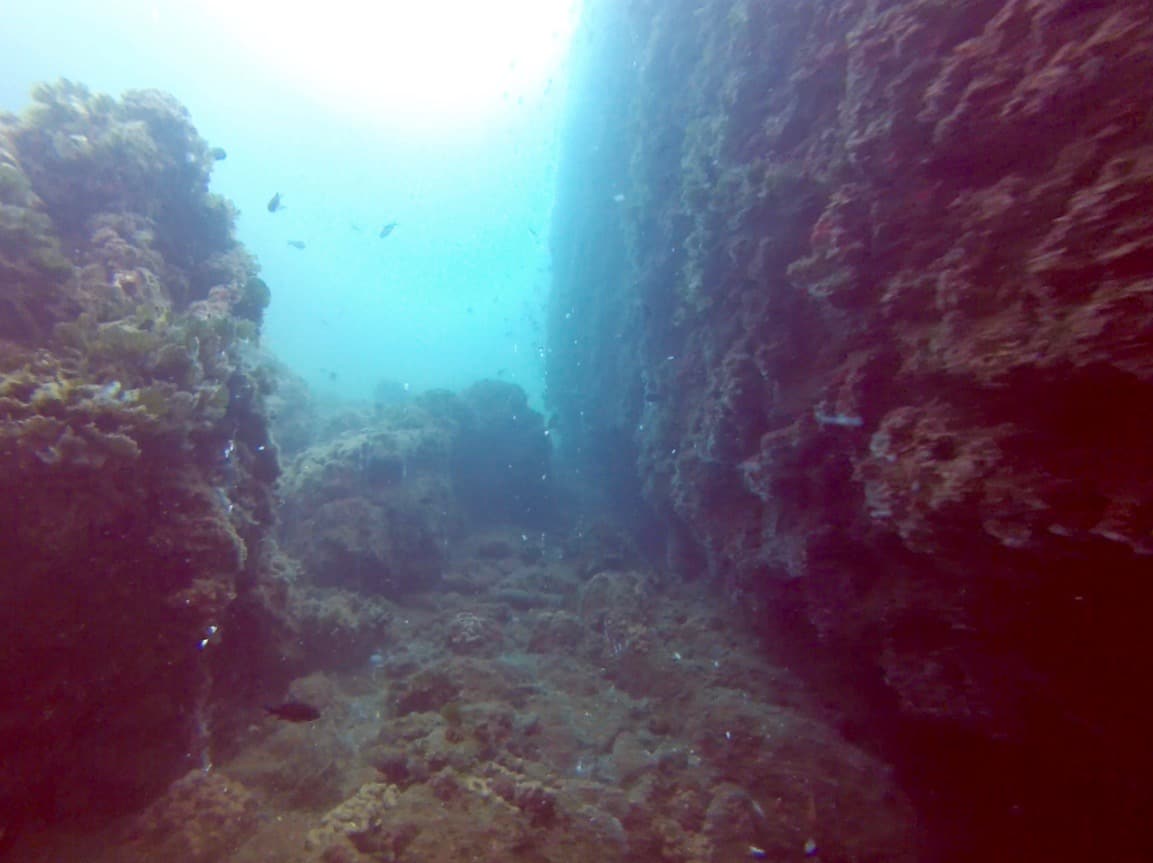
Our second dive site is at the shallow Nymphaeum of Emperor Claudius. The highlight and focal point here is a low ruined building with a curved apse decorated with statues of the Julio-Claudian dynasty. The statues have been reconstructed as they were found, and in the shifting underwater light, the scene is ghostly and sublime.
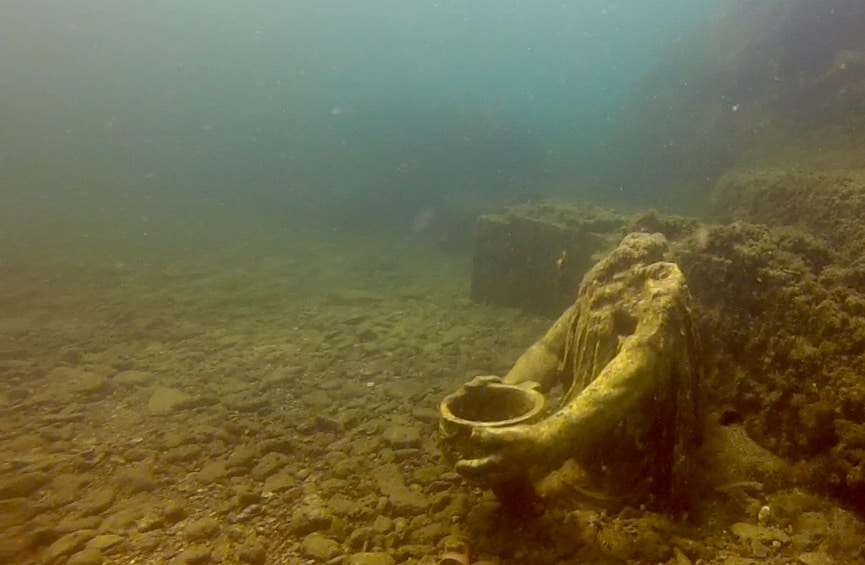
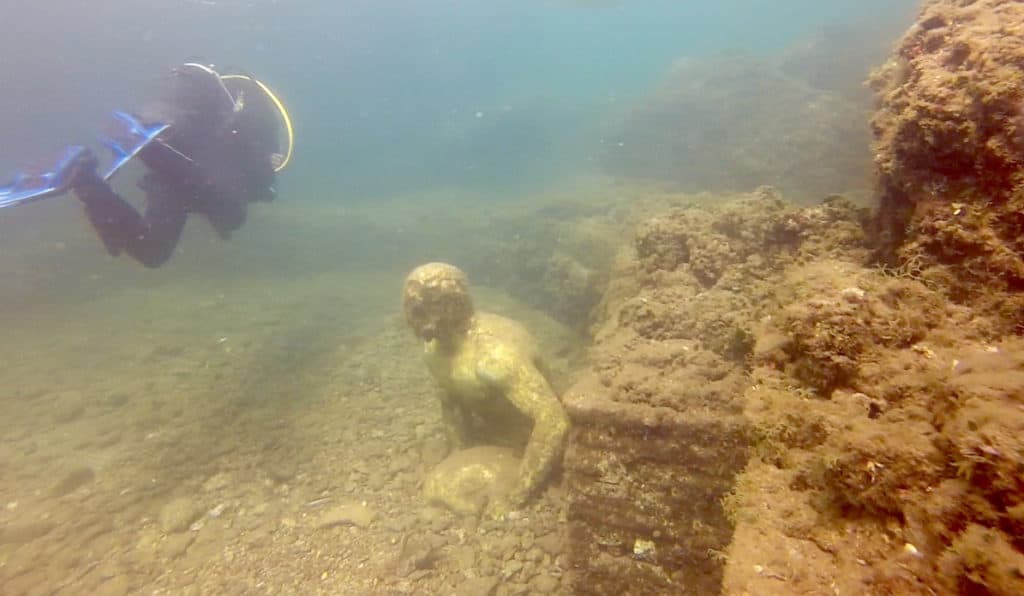
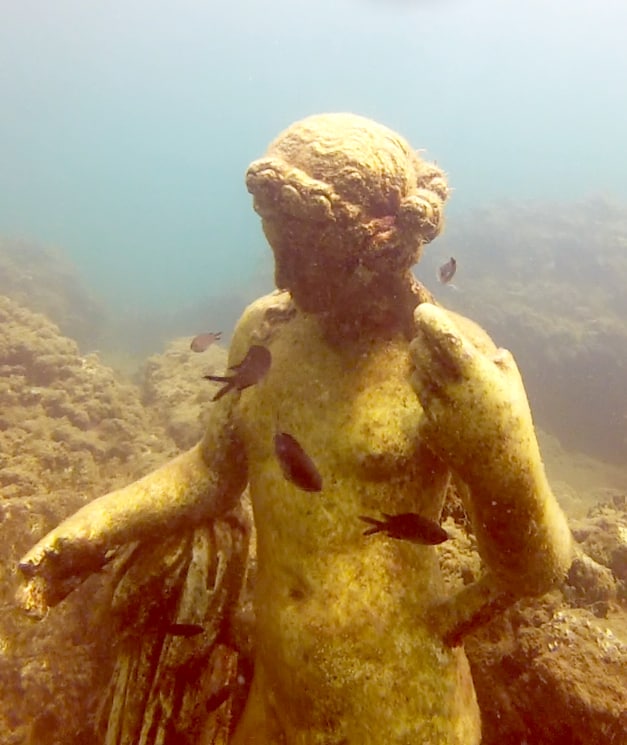
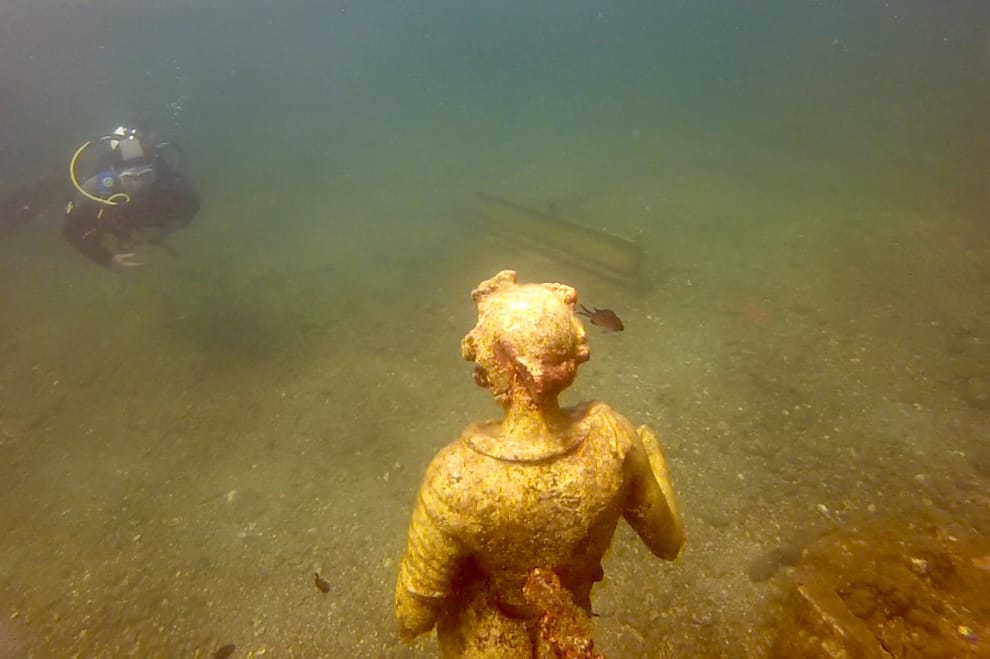
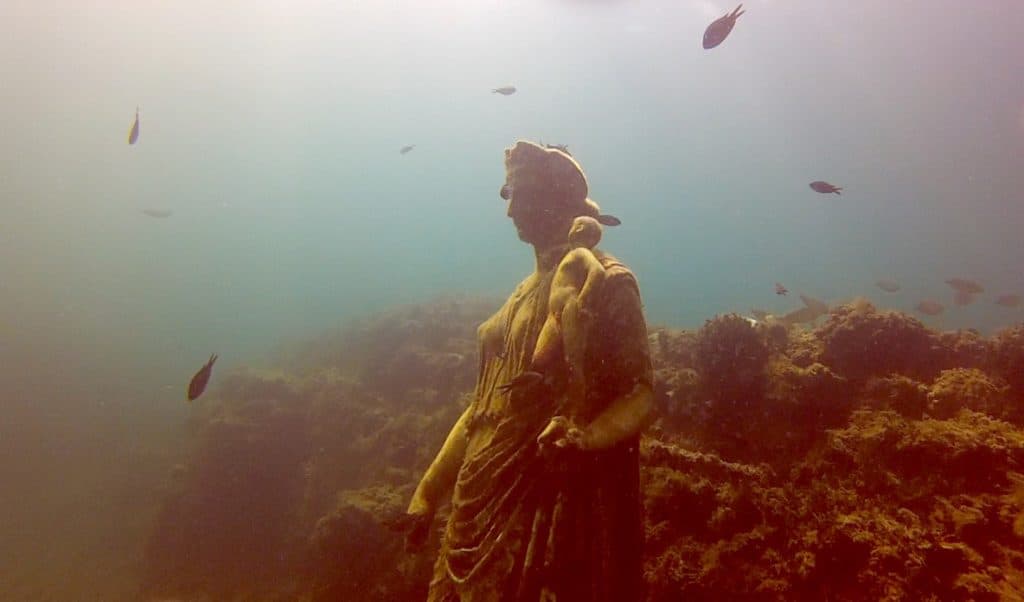
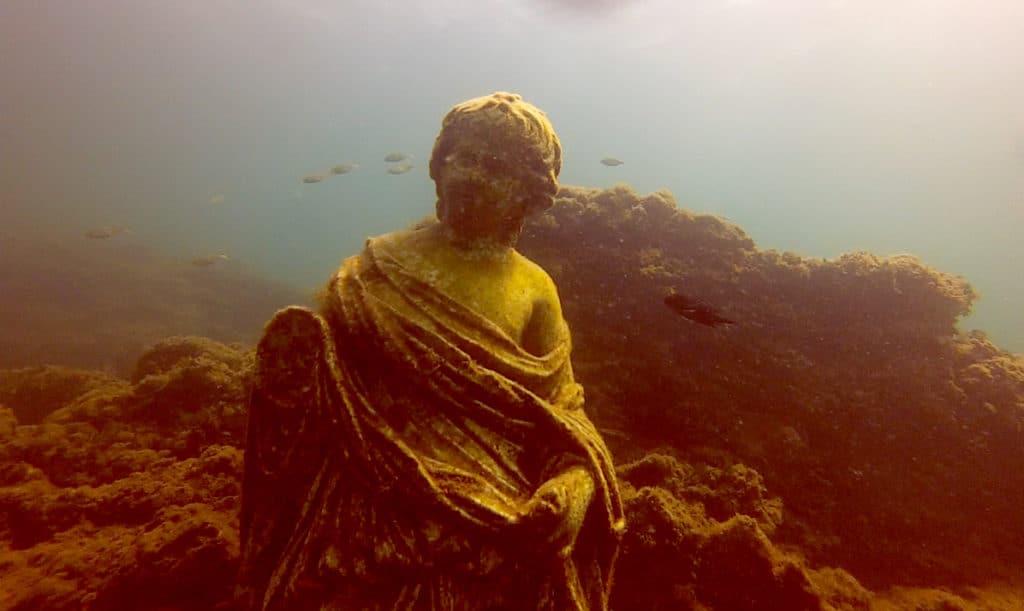
Simply stunning statues hidden under the waves.
Nearby, we swim along the Herculanea, a broad road paved with large stones that leads us to the remains of two villas.
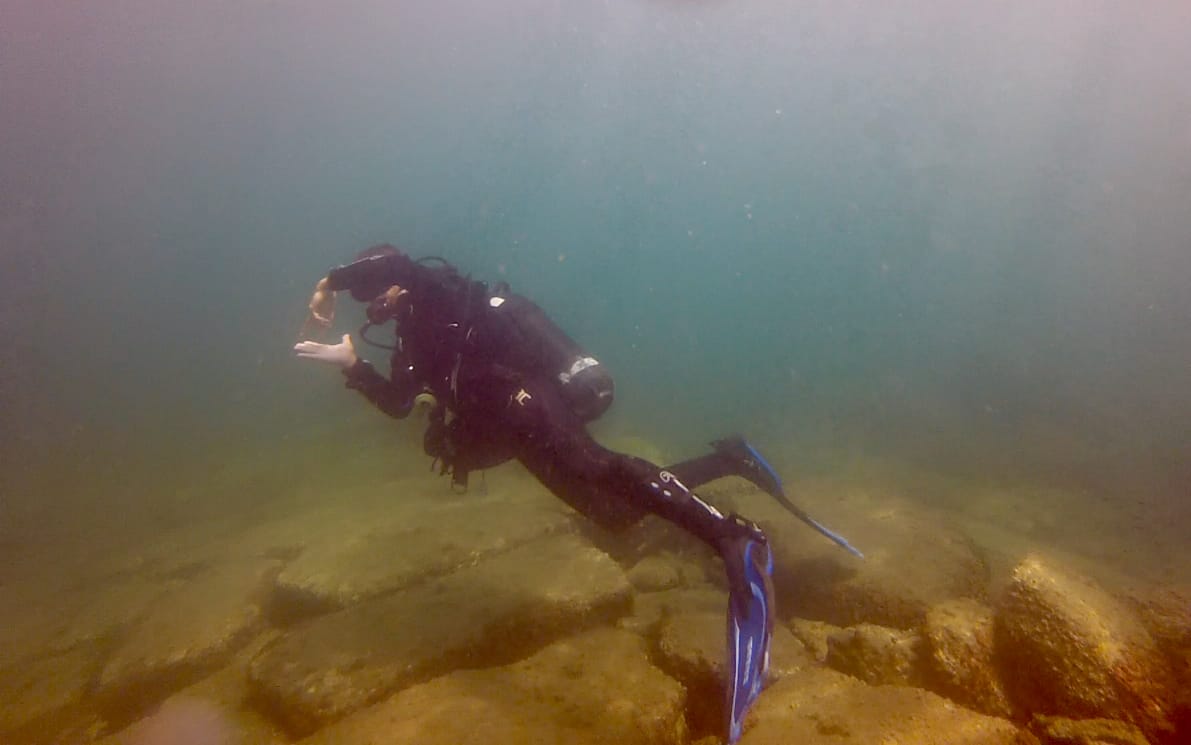
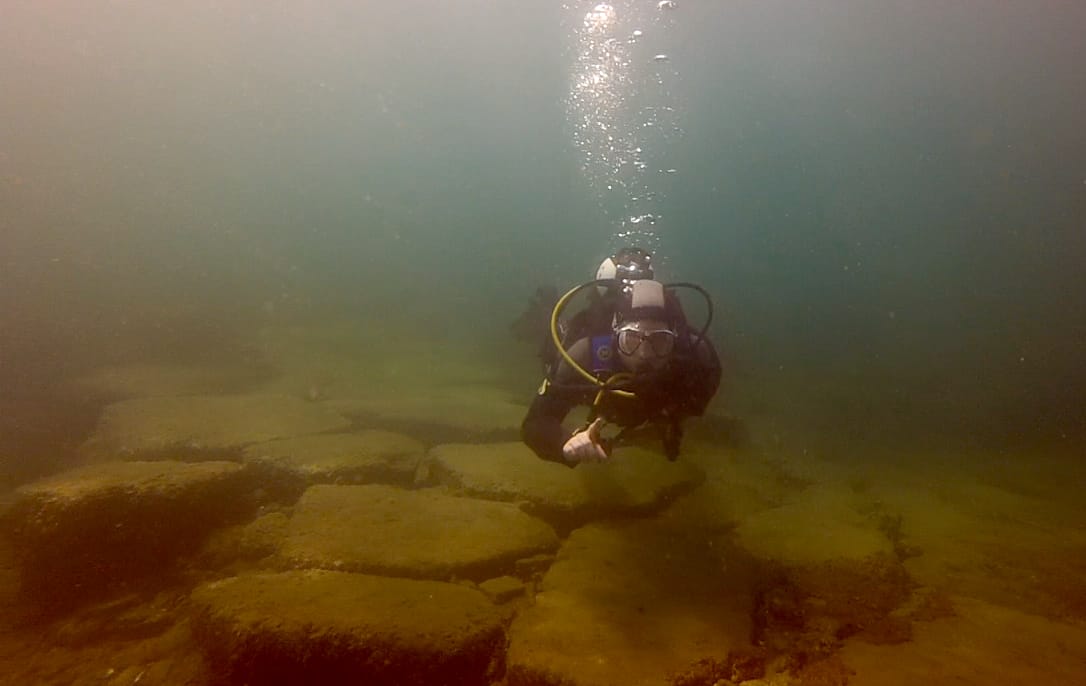
As we swim through the rooms, our guide waves his hands over the pebbly sand, revealing beautiful marble and mosaic floors, in strikingly good condition given they’re some two thousand years old. He covers them up again and we move on through this ethereal underwater landscape.
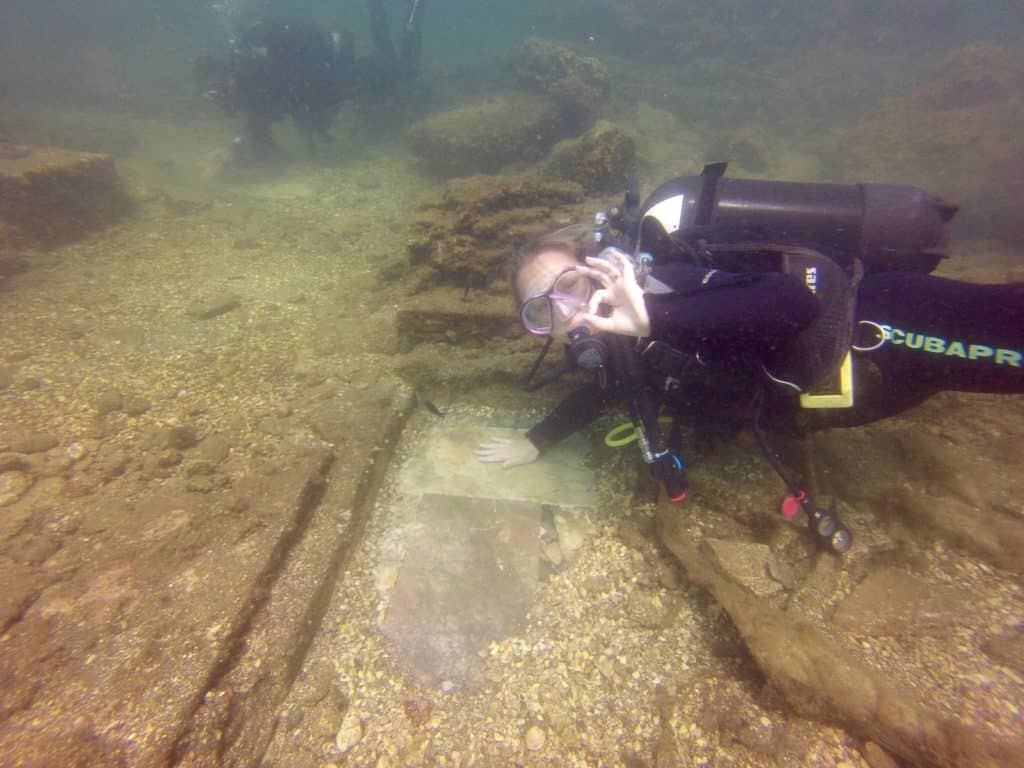
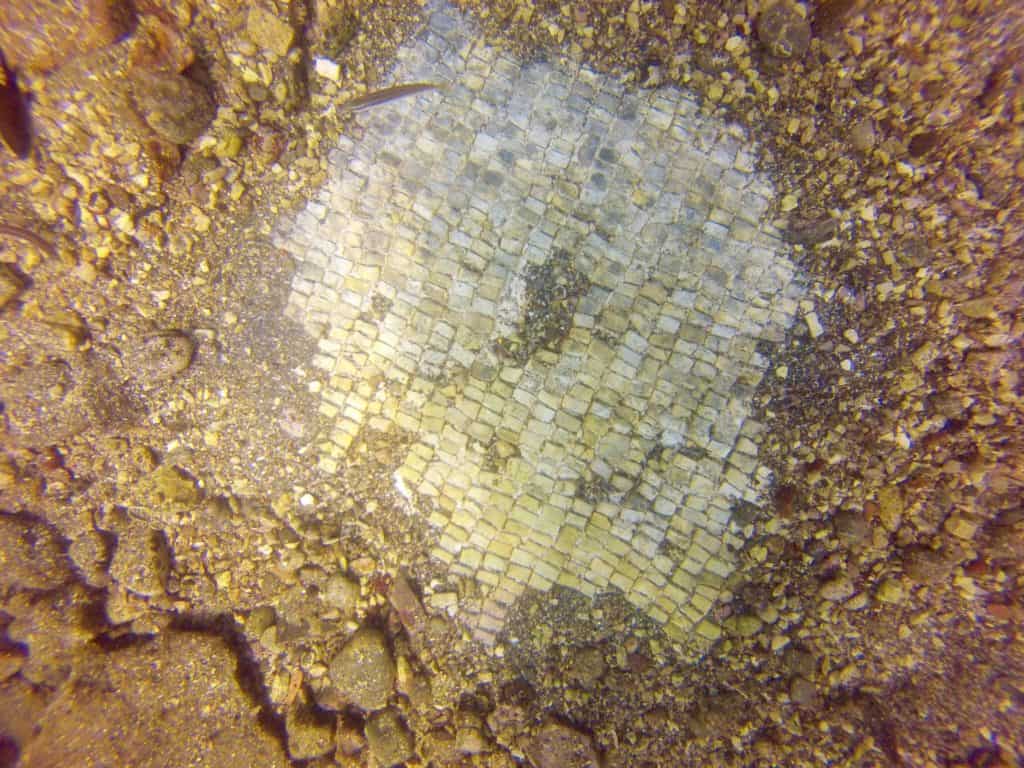
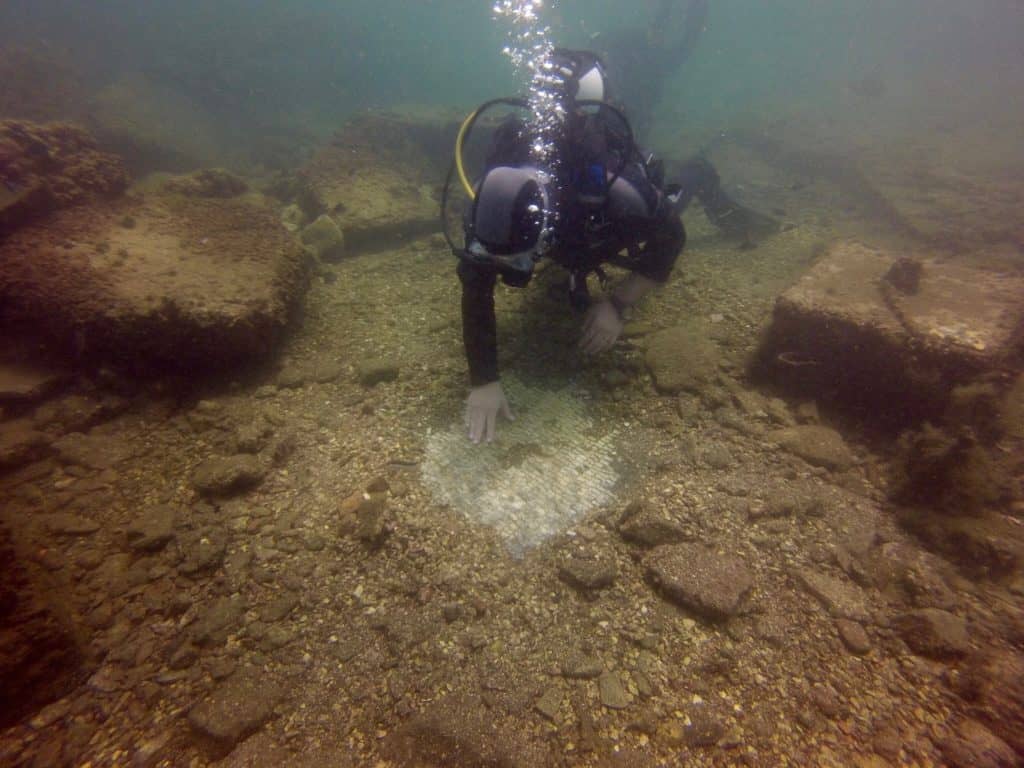
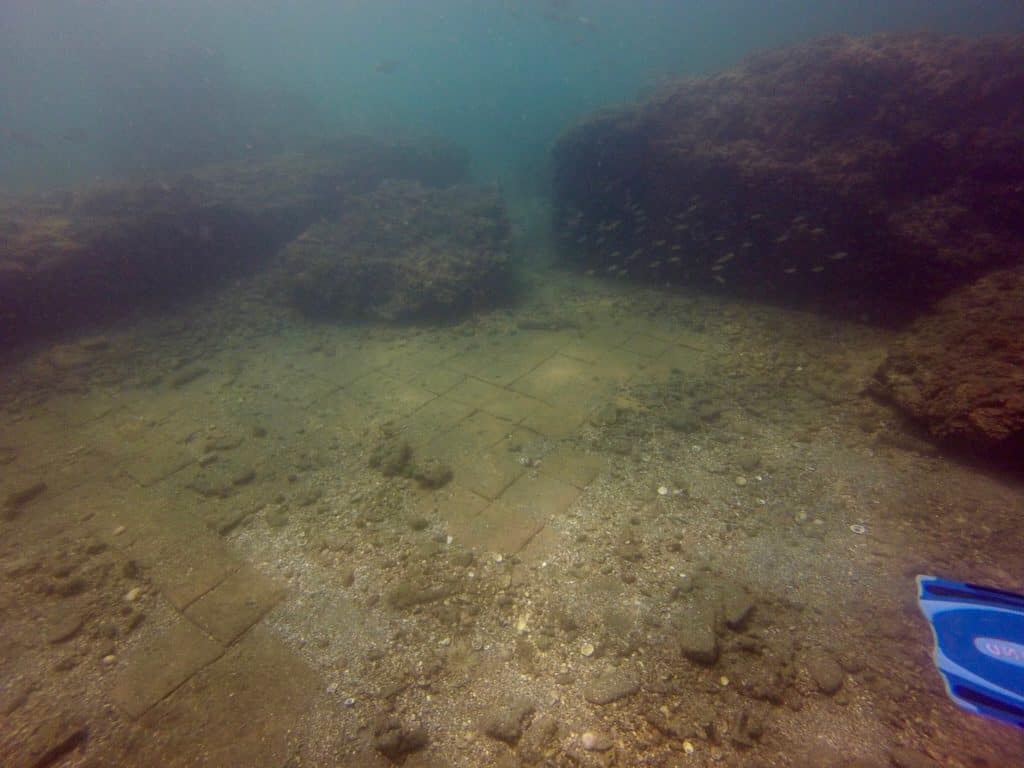
Beautiful mosaic, marble and paved floors hide under the sand.
For a couple who love diving and history, this experience is a coup. It’s a brief but exhilarating visit, and an absolute highlight of our trip to this ancient and incredible land.
Good to know
Getting there
Baia Underwater Archaeological Park is located in Italy’s Bay of Naples, off the shores of Pozzuoli. If you don’t have a car, it’s an easy train ride from Garibaldi Station in Naples to the towns that ring the bay, such as Pozzuoli, Arce Felice and Lucrino.
Diving
We dived with Centro Sub Campi Flegrei, which has a dive centre in Lucrino. Equipment was good, our guide was knowledgable and professional, and the staff speak multiple languages.
Travel tips
Give yourself a couple of days to dive in the underwater park and also to explore the land-based ancient ruins around the area, especially the Flavian Amphitheatre, Italy’s third largest. Our one regret was not staying longer and diving more sites as there are many.
Do eat the fresh, local seafood. Our first-time experience with live razor clams was an adventure in itself (we asked for the local speciality and in our surprise and uncertainty about what to do with them, we unintentionally attracted the attention of the entire restaurant).
If you have a question or comment about diving in Baia, drop us a message below.
